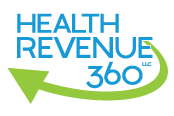Healthcare practices use revenue cycle management as a way to ensure they receive reimbursement for the care they provide to patients. Much goes into that process, including collections, denial management and resubmitting claims.
However, organizations also need to protect their cash flow during this process to be profitable. Medical practice key performance indicators are a valuable resource to monitor to help achieve profitability.
The following are five core physician practice key performance indicators most organizations need to pay close attention to if they aim to know where they stand at any given time based on revenue cycle management goals.
- Days in Accounts Receivable
Days in accounts receivable (A/R) is a description of the length of time claims take to be paid. The longer a practice waits for payment, the lower the cash flow and interest potential. An industry benchmark for this key performance indicator is 33 days in A/R, but keeping this figure under 45 days helps minimize financial strain.
To determine current days in A/R, choose a time to measure, such as 30 days. Then, add posted charges to this figure and subtract credits received from that figure. Next, divide this by the days in that period and divide total accounts receivable by this result, which is the average daily charges.
- Operating Margin
The operating margin is the amount of revenue the practice makes after paying all of its overhead and operational costs. This does not include taxes or interest paid on any debts owed. Improving operating margins helps increase profitability, especially as new methods of generating revenue are added to the business’s practice and operations.
- Clean Claims Ratio/Claims Denial Rate
Clean claims ratio (CCR) is the percentage of clean claims, which are those paid at their first submission. These have not been rejected and have not been filed more than one time. There are no errors within it. This typically means the practice is receiving funds faster. Aim for 70% to 85% in this ratio.
Also important is the claims denial rate. This is the number of claims denied by the number billed. It provides insight into how many of the claims submitted are denied for any reason. A low claims denial rate is a good goal for which to strive, since it means fewer delays in payment.
- Bad Debt Rate
The bad debt ratio is the number of claims that have been written off and are not paid. To determine this, divide the monetary amount you’ve written off by the allowed charges. A low bad debt rate is critical to maintaining profitability.
- Number of Appointments
The number of appointments is also a valuable tool. It’s not just having a high number of appointments scheduled, but also what happens to those appointments. For example, how many appointments are missed? How many are canceled?
By dividing the number of missed appointments by the total number of scheduled appointments, it’s possible to see just how much impact cancellations and no-shows are to your business’s cash flow and bottom line. Every appointment that’s not kept costs your organization money.
Healthcare Revenue 360, LLC Simplifies the Process
At Healthcare Revenue 360, LLC, we manage the revenue cycle management process on behalf of our clients. That makes it easier for you to manage the financial side of your practice. We tailor our approach to the individual business based on its performance. For private practice providers ready to embrace more profitability and transparency, contact Health Revenue 360, LLC for guidance and support.
